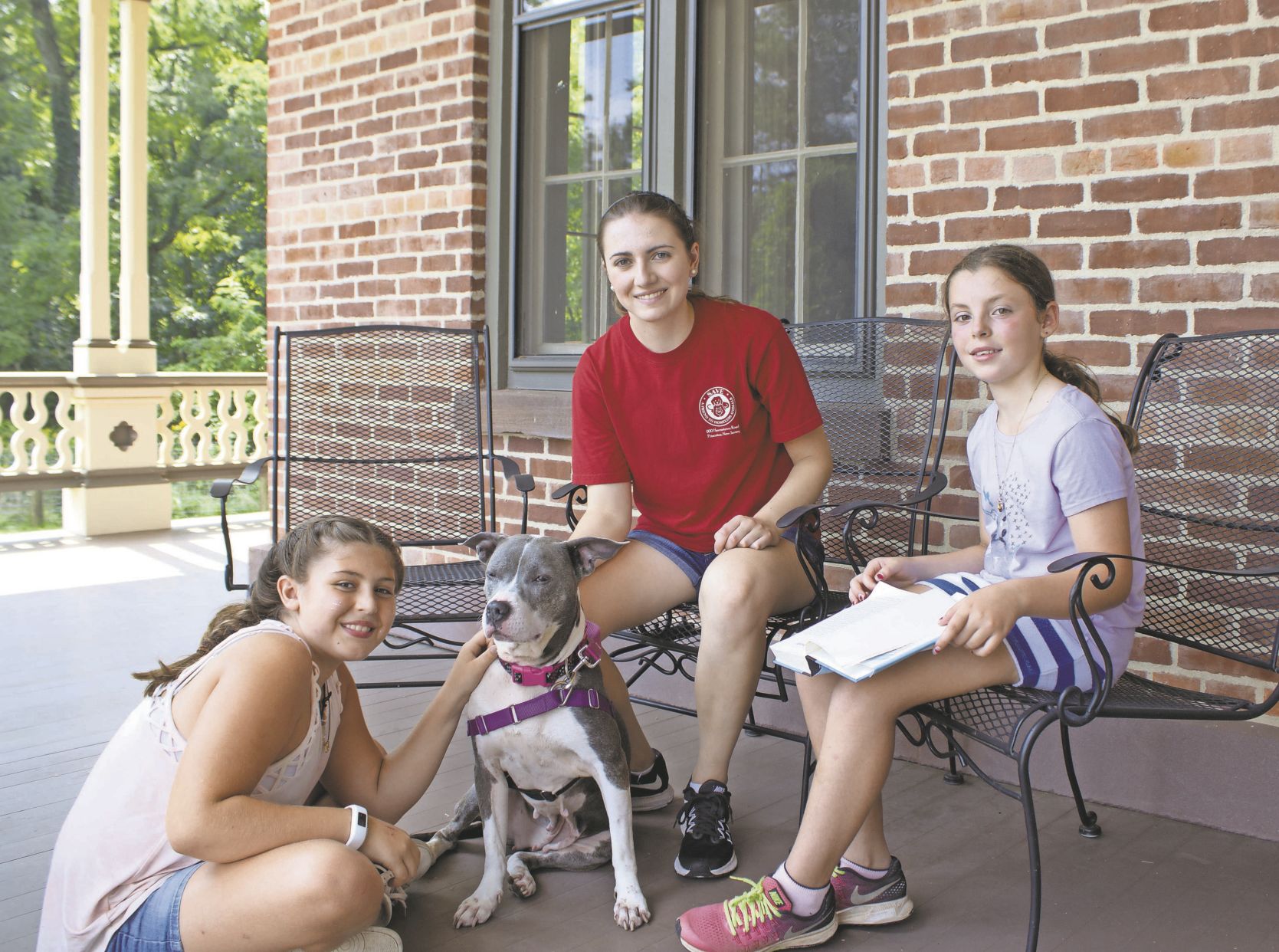By Philip Sean Curran, Staff Writer
Dana Schaar attends Montgomery High School, located next door to a pet shelter where she is cultivating the next generation of volunteers.
“Paws for Reading” is a roughly 18-month-old program that she has developed to bring children from the area to read to pets at the SAVE, A Friend to Homeless Animals shelter in Skillman. The program aims to socialize pets, in what Schaar, 17, hopes becomes a permanent part of the operation.
Schaar, seated in the shelter’s administrative office, a converted mansion, said in a recent interview that she got the idea for “Paws for Reading” at the beginning of her sophomore year of high school, two years ago. She was looking for a way to take a greater part in helping an organization that she had been familiar with through her mother, Lisa, a volunteer dog walker.
“I was really excited to get more heavily involved in the shelter in my high school years and eventually be able to walk a dog on my own,” she said.
SAVE requires that volunteer walkers be at least 18 years old. But Schaar, now 17, recalled thinking “there had to be another way for some children to interact with the dogs.”
That thought led her to create the reading program, something that drew low interest initially but has grown to two sessions per month. Schaar has an email distribution list of some 55 to 60 parents she’ll notify when there is a reading session that can hold 10 to 15 children.
“It just exponentially grew as people started communicating with their friends and letting them know,” she said. “A lot of the kids are probably kindergarten, I’d say, through sixth grade.”
Volunteers start by reading aloud to cats and then to dogs. She finds both the readers and the pets benefit, with it being important to acclimate the animals to hearing children’s voices to be socialized for eventual adoption.
“But I knew that the children would also like to read to people who aren’t going to judge them or anything when they read,” she said. “I’ve had some 3-year-olds that come and they can’t even read, so it’s just showing the dogs pictures and stuff, talking to him, making up your own story.”
She said children are able to develop reading skills without worrying if the audience notices they mispronounced a word. Beyond that, she continued, they grow to be familiar with being around animals.
“And I think that they’re able to develop a bond with animals, which I think is very helpful when you grow up,” she said.
To learn more about “Paws for Reading,” send email to [email protected].

